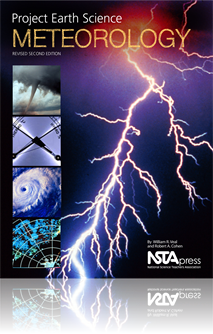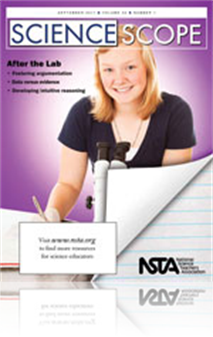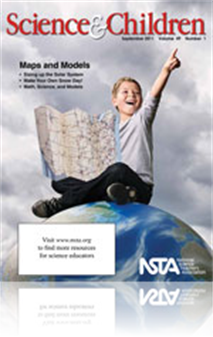All Resources
Book Chapter
A hot air balloon uses hot air. You may have heard that hot air rises. In this Activity, you will explore what it is about hot air that makes it rise....
Book Chapter
Weather’s Central Actor: Water
Water plays an important role in weather, not only as a liquid in rivers, lakes, oceans, and clouds, but also as a vapor in the atmosphere and as a solid in snow, glaciers, ice, and clouds. The total quantity of water in all forms in Earth’s hyd...
Book Chapter
Wind is an important part of everyone’s daily lives. Have you ever flown a kite, thrown a disk, glided a paper airplane, or released a balloon into the air? All of these events have been affected by wind to some degree. If the wind blows rapidly, t...
Book Chapter
The Inner Workings of Severe Weather
Thunderstorms, tornadoes, and hurricanes are three examples of weather that can be dangerous to society. Such severe weather patterns require an understanding of the mechanisms responsible for their development, as well as timely observational and...
NSTA Press Book
Project Earth Science: Physical Oceanography, Revised 2nd Edition
How well can your students— • Explain why ice floats? • Model ocean currents? • Predict tides? • Describe the proper clean-up of an oil spill? ...
By Alfredo L. Aretxabaleta, Gregg R. Brooks, Nancy W. West
Book Chapter
The example of Models-Based Science Teaching (MBST) the author presents in this chapter is built upon the guided inquiry model. Inquiry has shown itself to be at least as effective as traditional approaches for content acquisition and better in creat...
NSTA Press Book
STEM Student Research Handbook
This comprehensive resource for STEM teachers and students, outlines the various stages of large-scale research projects, enabling teachers to coach their students through the research process. This handbook provides enough detail to embolden all tea...
By Darci J. Harland
Journal Article
Scope on the Skies: In the Middle
This column focuses on astronomy throughout the year. In this month’s issue the author discusses the interstellar medium....
Journal Article
NSTA's 2011–2012 president sends a message to science educators....
Journal Article
Tried and True: Teaching the Combined Gas Law
This column provides classic demonstrations and experiments with a new twist. This lesson aids students in understanding the relationship among temperature, pressure, and volume of gas in an enclosed container....
Journal Article
Data Versus Evidence: Investigating the Difference
Science teachers and graduate students have developed activities and assessment tools that begin to help students make the distinction between data and evidence. Two activities are covered in this article....
Journal Article
Purposeful questioning encourages visual literacy during a lesson on cells. In this article a teacher uses a cutaway diagram to teach visual literacy skills to enhance students' science inquiry experiences....
Journal Article
The Multiple Faces of Argument in School Science
This article summarizes, provides examples of, and explains the advantages and disadvantages of three argument-based instructional approaches....
Journal Article
Generating Discourse With Cookie and Doughnut Investigations
These skills-based lesson plans contain questions that have been designed for student discourse concentrating on the nature of science and consumer claims, and they provide an engaging way for students to build their science process skills by using c...
Journal Article
Editor's Corner: Motivating the Millennials
The Science Teacher’s editor shares thoughts on the current issue....
Journal Article
Preschool students learn science content naturally by using hands-on explorations of spiders and their webs....
Journal Article
Point of View: A Stranger in a Strange Land
This column shares reflections or thoughtful opinions on issues of broad interest to the community. In this month’s issue the author discusses how to get nonmajors to feel like they belong in the world of science....
Journal Article
Idea Bank: Mirror Writing and Learning Physics by Helping Others
The Idea Bank provides tips and techniques for creative teaching, in about 1,000 words. In this month’s Idea Bank, authors explore mirror writing and physics....
Journal Article
Teaching and Assessing the Nature of Science
Learn how to effectively incorporate the nature of science in your classroom. Nature of science issues should be addressed as questions, which encourages both teachers and students to think more deeply about the context of nature of science ideas....
Journal Article
Avatar in the Science Classroom
This article discusses linking science and pop culture to design imaginary ecosystems. The author presents "The Dream Ecosystem" project, based on the movie Avatar....
Journal Article
Introducing <i>A Framework for K–12 Science Education</i>: A Message to Our Members
The author gives a general overview of the recently released National Research Council's A Framework for K–12 Science Education....
Journal Article
Editor's Roundtable: Worry-Free Inquiry
Science Scope’s editor shares thoughts regarding the current issue....
Journal Article
How Not to Lose Your Students With Concept Maps
This study examines student perceptions of usefulness of concept mapping across four different physiology courses that varied in their implementation....
Journal Article
Using course materials to promote visual literacy skills is an important aspect of undergraduate science education. A comparison study was undertaken to determine the composition of visual representation, specifically representations of data generate...
Journal Article
Using Writing for Alternative Audiences in a College Integrated Science Course
Two separate writing-to-learn activities in which students wrote to authentic audiences outside of the instructor were used in a college integrated science course, Science of Water. An overview of students' tasks is presented along with student feedb...
Journal Article
Fourth-grade students express erosion understanding in an interdisciplinary way. The authors describe the use of different forms of 2- and 3-D models to show students how, when, and why scientists and mathematicians use models....
Journal Article
Introducing <i>A Framework for K–12 Science Education</i>: A Message to Our Members
The author gives an overview of the National Research Council's newly released document A Framework for K–12 Science Education....
Journal Article
Science 2.0: Science Teaching and "the Cloud'
This column shares web tools that support learning. This month’s issue discusses using cloud-based storage options....
Journal Article
Editorial: The Power of a Vocational Avocation
The Journal of College Science Teaching’s editor shares thoughts regarding the current issue....
Journal Article
The New Teacher's Toolbox: New Year, New You
This column shares tips for teachers just beginning their career. In this month’s issue the author shares tips for starting on the right foot and charting a course for a successful and rewarding year ahead....
Journal Article
This article uses current events and models to generate inquiry. The teacher uses recycled materials to build a tsunami model....
Journal Article
Green Science: A Breath of Fresh Air: Addressing Indoor Air Quality
This column focuses on issues related to environmentally friendly and sustainable science. This month’s issue looks at the causes, sources, and types of indoor pollution....
Journal Article
The authors developed a protocol for observing laboratory learning environments. It directs observer attention to forms of student engagement and discourse. By categorizing the predominant forms of engagement and discourse at discrete points througho...
Journal Article
This project uses a just-in-time and necessity approach to mathematical learning, with online modular tutorials assigned prior to students encountering a quantitative concept in a geoscience context. Pre- and posttest scores show that the modules use...








